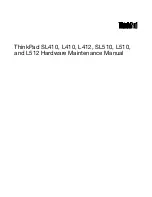
refresh their caches.
3. Use the
retire
utility program to retire the old technology volumes. r
etire
can accept a list of PVs
to retire, or can retire all volumes in a storage class that are in a specified Condition.
dump_sspvs
can be used to create a list of PVs for
retire
to process. Creating a list of PVs for this step and the
following steps is the recommended procedure. If the number of volumes to retire is small, they
can be retired manually, using SSM, by changing the Condition of the volume and setting the
Retire flag using the
Core Server Tape Volume
(or
Core Server Disk Volume
) window. Retiring a
volume is sufficient to prevent it from receiving new storage segments. It is not necessary to
change the Condition of tape volumes to EOM; RO Condition will prevent the tapes from being
written and is reversible. Tapes changed to EOM condition cannot be changed to any other
Condition other than Down.
4. Import and create new storage technology volumes. These volumes will take on the characteristics
of the re-defined storage class. The administrator should probably create only one volume at first
in order to check its characteristics. If they are not as desired, the volume can be deleted, and
steps one and two can be repeated. It is not necessary to create all the new technology volumes at
once. Only as many as are required to meet the immediate needs of the system need to be created.
Keep in mind that when storage resources are created, they are immediately available for use by
the system.
5. Either allow the natural attrition process to take place if time is not an issue, or speed up the
replacement process by using the
repack
utility to repack all retired volumes in the storage class.
This step is frequently a long process and may require regular attention from the administrator.
Use
dump_sspvs
to monitor the progress of the repack process and to determine that all retired
volumes have been emptied. Note that
repack
can accept a list of volumes to process, and the list
can be submitted to
repack
repeatedly without harm.
6. Invoke the
remove
utility to remove all retired and empty volumes. This utility will delete all
resources associated with these volumes and export them from HPSS. Note that
remove
accepts a
list of PVs to remove.
HPSS Management Guide
November 2009
Release 7.3 (Revision 1.0)
292
Summary of Contents for RELEASE 7.3
Page 14: ...HPSS Management Guide November 2009 Release 7 3 Revision 1 0 14...
Page 195: ...HPSS Management Guide November 2009 Release 7 3 Revision 1 0 195...
Page 210: ...HPSS Management Guide November 2009 Release 7 3 Revision 1 0 210...
Page 215: ...HPSS Management Guide November 2009 Release 7 3 Revision 1 0 215...
Page 222: ...HPSS Management Guide November 2009 Release 7 3 Revision 1 0 222...
Page 266: ...HPSS Management Guide November 2009 Release 7 3 Revision 1 0 266...
Page 293: ...HPSS Management Guide November 2009 Release 7 3 Revision 1 0 293...
Page 367: ...HPSS Management Guide November 2009 Release 7 3 Revision 1 0 367...
Page 372: ...HPSS Management Guide November 2009 Release 7 3 Revision 1 0 372...
Page 384: ...HPSS Management Guide November 2009 Release 7 3 Revision 1 0 384...
Page 388: ...HPSS Management Guide November 2009 Release 7 3 Revision 1 0 388...
















































